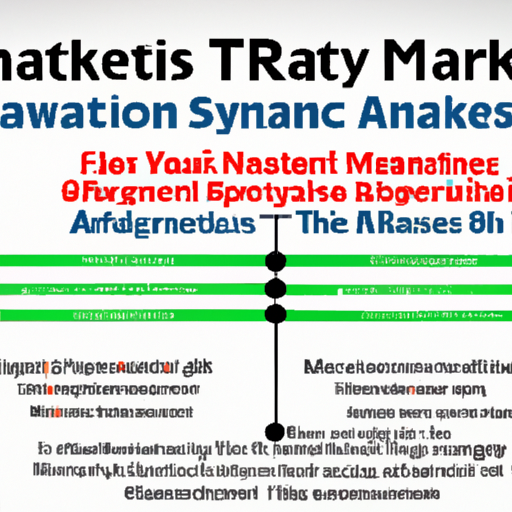Market Analysis Frameworks
So you want to understand how to assess and analyze different markets? Well, you’re in luck! In this article, we will explore the world of market analysis frameworks and how they can help you make informed decisions in the ever-changing business landscape. Whether you are a seasoned entrepreneur or just starting out, having a solid understanding of market analysis frameworks is crucial for success. So, let’s dive in and uncover the strategies, tools, and techniques that will empower you to navigate the complex maze of market analysis with confidence.

Table of Contents
1. Porter’s Five Forces
1.1 Competitive rivalry
When conducting a market analysis, it is crucial to assess the level of competitive rivalry in the industry. Competitive rivalry refers to the intensity of competition among existing firms. Factors such as the number of competitors, market concentration, and differentiation among products or services can impact the level of competition. Understanding the competitive landscape helps identify potential opportunities and challenges for your business.
1.2 Bargaining power of suppliers
The bargaining power of suppliers can significantly influence the profitability and competitiveness of a business. Suppliers with high bargaining power can demand higher prices, impose strict terms, or even limit the availability of key resources. Factors such as the concentration of suppliers, availability of substitutes, and cost of switching suppliers are important considerations in assessing supplier power. By understanding supplier dynamics, you can devise strategies to mitigate any potential risks or leverage opportunities.
1.3 Bargaining power of buyers
Similar to suppliers, buyers can also exert significant influence on businesses. The bargaining power of buyers refers to their ability to negotiate favorable terms, lower prices, or switch to alternative providers. Factors such as buyer concentration, buyer’s knowledge and information, and the availability of substitute products or services can affect buyer power. Understanding buyer behavior and preferences helps in tailoring marketing strategies and enhancing customer satisfaction.
1.4 Threat of new entrants
The threat of new entrants represents the possibility of new competitors entering the market. The entry of new players can intensify competition and reduce market share for existing firms. Factors such as barriers to entry, economies of scale, and existing brand loyalty in the market influence the threat of new entrants. By evaluating the level of threat, businesses can develop strategies to fortify their market position and deter potential entrants.
1.5 Threat of substitute products or services
The threat of substitute products or services refers to the availability of alternatives that can fulfill the same customer needs. Substitutes can pose a significant threat to a business by attracting customers away from its offerings. Factors such as price-performance tradeoffs, switching costs, and customer loyalty impact the threat of substitutes. Analyzing substitution possibilities helps businesses identify potential challenges and adapt their products or services to better meet customer needs.
2. SWOT Analysis
2.1 Strengths
Conducting a SWOT (Strengths, Weaknesses, Opportunities, and Threats) analysis helps businesses identify their internal strengths and competitive advantages. Strengths represent the core competencies or unique capabilities that set a business apart from its competitors. These can include factors such as strong brand recognition, high-quality products or services, efficient processes, or a loyal customer base. Recognizing and leveraging strengths enable businesses to capitalize on their competitive edge and excel in the market.
2.2 Weaknesses
Identifying weaknesses is equally important as recognizing strengths. Weaknesses refer to the areas where a business lags behind its competitors or faces internal challenges. These can include factors such as a lack of brand awareness, limited resources, inefficient operations, or outdated technology. By addressing weaknesses, businesses can improve their performance, mitigate risks, and enhance their overall competitiveness.
2.3 Opportunities
Opportunities are external factors that businesses can leverage to their advantage. These can arise from market trends, emerging technologies, changing customer preferences, or new market segments. Recognizing and capitalizing on opportunities allows businesses to expand their customer base, introduce innovative products or services, or enter new markets. Analyzing opportunities helps businesses stay ahead of the curve and generate sustainable growth.
2.4 Threats
Threats are external factors that can impact the performance and profitability of a business. These can include factors such as intense competition, changing regulatory environment, economic downturns, or technological disruptions. Understanding threats enables businesses to devise strategies to mitigate risks, anticipate challenges, and stay resilient in the face of uncertainties.
3. PESTEL Analysis
3.1 Political factors
Political factors encompass the influence of government policies, regulations, and political stability on businesses. This analysis considers factors such as taxation policies, trade regulations, labor laws, and political stability. Political factors can significantly impact an industry’s profitability and operating environment. By understanding political dynamics, businesses can adapt their strategies to comply with regulations, seize opportunities, and mitigate risks.
3.2 Economic factors
Economic factors analyze the macroeconomic conditions and trends that can affect businesses. These include factors such as economic growth, inflation rates, interest rates, and unemployment levels. Economic factors impact consumer purchasing power, business investment decisions, and market demand. By examining economic trends, businesses can make informed decisions regarding pricing strategies, market entry or expansion, and resource allocation.
3.3 Social factors
Social factors reflect the cultural, demographic, and societal trends that shape consumer behavior and preferences. Factors such as population demographics, consumer attitudes, lifestyle changes, and social values influence market demand and business strategies. Understanding social dynamics helps businesses tailor their marketing messages, product designs, and customer experiences to resonate with target consumers.
3.4 Technological factors
Technological factors encompass the impact of emerging technologies and innovation on businesses. This analysis considers factors such as technological advancements, research and development activities, and industry disruption. Technology has the potential to revolutionize industries, create new markets, and change customer expectations. By keeping abreast of technological trends, businesses can adapt their operations, develop innovative products or services, or leverage digital platforms to gain a competitive edge.
3.5 Environmental factors
Environmental factors assess the ecological and environmental impact of businesses. Factors such as climate change, resource scarcity, sustainability practices, and environmental regulations influence industry operations and consumer preferences. Businesses are increasingly expected to operate in an environmentally responsible manner to mitigate their impact on the planet. By considering environmental factors, businesses can develop sustainable practices, enhance their reputation, and cater to the growing demand for eco-friendly products or services.
3.6 Legal factors
Legal factors encompass the impact of laws, regulations, and legal frameworks on businesses. This analysis considers factors such as consumer protection laws, intellectual property rights, employment laws, and safety regulations. Legal factors vary across countries and industries and can significantly influence business operations. Understanding the legal landscape helps businesses ensure compliance, mitigate legal risks, and protect their intellectual property or assets.

4. Market Segmentation
4.1 Geographic segmentation
Geographic segmentation involves dividing the market based on geographic factors such as location, region, or climate. This segmentation allows businesses to tailor their marketing strategies to specific geographical areas. Factors such as cultural differences, climate variations, or regional preferences can impact consumer buying behaviors. By targeting specific geographic segments, businesses can design localized marketing campaigns, adapt product offerings, and optimize distribution channels.
4.2 Demographic segmentation
Demographic segmentation divides the market based on demographic factors such as age, gender, income, education, or occupation. Understanding the characteristics and preferences of different demographic segments helps businesses tailor their marketing messages and product designs. By analyzing demographic data, businesses can identify target audiences, develop personalized marketing strategies, and create products that cater to specific demographic needs.
4.3 Psychographic segmentation
Psychographic segmentation focuses on consumers’ lifestyle, attitudes, values, and personality traits. This segmentation considers factors such as interests, opinions, hobbies, or social class. Psychographic segmentation digs deeper into consumer motivations and helps businesses understand the psychological factors that influence buying decisions. By segmenting based on psychographic factors, businesses can craft targeted marketing messages, develop personalized products, and cultivate brand loyalty.
4.4 Behavioral segmentation
Behavioral segmentation categorizes consumers based on their behaviors, usage patterns, or purchasing habits. This segmentation considers factors such as brand loyalty, frequency of purchases, usage occasions, or response to marketing stimuli. Analyzing behavioral data allows businesses to identify customer needs, develop customer retention strategies, and tailor product offerings to specific usage patterns. By targeting distinct behavioral segments, businesses can maximize customer satisfaction and increase customer lifetime value.
5. Competitive Analysis
5.1 Identifying competitors
Conducting a competitive analysis is essential to understand the competitive landscape and identify key competitors in the market. Identifying competitors involves researching and analyzing firms that operate in the same industry or serve similar target markets. This analysis helps businesses evaluate the strengths, weaknesses, and strategies of their competitors.
5.2 Analyzing competitors’ strengths and weaknesses
Analyzing the strengths and weaknesses of competitors provides valuable insights into their capabilities and market positioning. By understanding competitors’ strengths, businesses can identify areas where they need to improve or differentiate. Similarly, analyzing competitors’ weaknesses helps businesses identify opportunities for gaining a competitive advantage.
5.3 Assessing competitors’ market share and positioning
Assessing competitors’ market share and positioning allows businesses to gauge their competitive standing. This analysis considers factors such as market share, brand recognition, customer perception, and pricing strategies. By understanding competitors’ market share and positioning, businesses can evaluate their own market position, identify areas for improvement, and develop strategies to differentiate themselves.
5.4 Monitoring competitors’ strategies and actions
Monitoring competitors’ strategies and actions is crucial for staying up-to-date with industry trends and identifying potential opportunities or threats. This analysis involves tracking competitors’ product launches, marketing campaigns, pricing changes, or expansion plans. By monitoring competitors’ strategies, businesses can proactively respond to market developments, adjust their own strategies, and seize opportunities in an evolving market.
6. Value Chain Analysis
6.1 Inbound logistics
Inbound logistics involves the activities and processes of receiving, storing, and distributing raw materials or inputs within a business. Analyzing inbound logistics helps businesses identify opportunities to optimize their supply chain, streamline operations, and reduce costs. Efficient inbound logistics can contribute to enhanced productivity, faster turnaround times, and improved customer satisfaction.
6.2 Operations
Operations comprise the core activities involved in transforming inputs into finished products or services. Analyzing operations helps businesses identify areas for process improvement, technological advancements, or cost reduction. Efficient operations can result in increased productivity, higher quality outputs, and improved profitability.
6.3 Outbound logistics
Outbound logistics involves the activities and processes of storing, packaging, and distributing finished products or services to customers. Analyzing outbound logistics helps businesses optimize their distribution networks, improve delivery times, and enhance customer satisfaction. Effective outbound logistics can contribute to increased customer loyalty, reduced costs, and competitive advantage.
6.4 Marketing and sales
Marketing and sales encompass the activities involved in promoting, advertising, and selling products or services to customers. Analyzing marketing and sales helps businesses identify target markets, develop marketing strategies, and optimize sales channels. Effective marketing and sales efforts can result in increased brand awareness, customer acquisition, and revenue growth.
6.5 Service
Service activities involve providing after-sales support, customer service, or technical assistance to customers. Analyzing service activities helps businesses identify areas for improvement in customer support, service quality, and complaint resolution. Exceptional service can lead to increased customer satisfaction, repeat purchases, and positive word-of-mouth.
7. Growth Matrix
7.1 Market penetration
Market penetration involves increasing market share or sales within existing markets with existing products or services. This strategy aims to attract more customers, expand market reach, or increase customer usage. Market penetration can be achieved through aggressive marketing campaigns, price adjustments, or customer loyalty programs.
7.2 Market development
Market development focuses on expanding into new markets or target segments with existing products or services. This strategy involves identifying untapped market opportunities, conducting market research, and adapting products or services to suit new customer segments. Market development can be pursued through geographic expansion, targeting new demographics, or entering new distribution channels.
7.3 Product development
Product development involves introducing new or enhanced products or services to existing markets. This strategy aims to meet evolving customer needs, differentiate from competitors, or capitalize on emerging trends. Product development requires research and development efforts, innovation, and understanding of customer preferences.
7.4 Diversification
Diversification refers to entering new markets or developing new products or services that are unrelated to the existing portfolio. This strategy enables businesses to spread risks, seize new opportunities, or leverage existing capabilities in new areas. Diversification can be pursued through internal development, mergers and acquisitions, or strategic alliances.
8. SWOT-AHP Analysis
8.1 Weighting the importance of SWOT factors
SWOT-AHP (Analytic Hierarchy Process) analysis uses a systematic approach to prioritize the importance of SWOT factors. This analysis involves assigning weights to each factor based on its relative significance. By weighting the importance of SWOT factors, businesses can evaluate their overall strategic position and focus on areas that require the most attention.
8.2 Evaluating alternative strategies
Evaluating alternative strategies involves assessing the feasibility, risks, and expected outcomes of different strategic options. This analysis considers factors such as resource requirements, market conditions, and competitive dynamics. By evaluating alternative strategies, businesses can make informed decisions regarding the most suitable course of action.
8.3 Ranking strategies based on their attractiveness and feasibility
Ranking strategies based on attractiveness and feasibility helps businesses prioritize and select the most viable strategic options. This analysis considers factors such as market potential, competitive advantage, resource availability, and risk assessment. By ranking strategies, businesses can focus on implementing the most promising and feasible options for achieving their objectives.
9. Customer Analysis
9.1 Identifying target customers
Identifying target customers involves segmenting the market based on customer demographics, psychographics, needs, or behaviors. By identifying target customers, businesses can tailor their marketing efforts, develop personalized messaging, and enhance customer acquisition. Understanding the needs and preferences of target customers enables businesses to design products or services that resonate with their target market.
9.2 Understanding customer needs and preferences
Understanding customer needs and preferences is crucial for developing products or services that meet market demands. This analysis involves conducting market research, surveys, or focus groups to gain insights into customer preferences, pain points, or desired features. By understanding customer needs, businesses can deliver superior value, differentiate from competitors, and build strong customer relationships.
9.3 Analyzing customer behavior
Analyzing customer behavior entails studying purchasing patterns, usage frequency, or buying motivations of customers. This analysis helps businesses understand why customers make certain choices, how they interact with products or services, and what factors influence their decision-making process. By analyzing customer behavior, businesses can optimize marketing strategies, improve customer experiences, and increase customer loyalty.
9.4 Segmenting customers based on their characteristics and behaviors
Segmenting customers based on characteristics and behaviors involves dividing the target market into distinct groups based on common traits or behaviors. This segmentation helps businesses tailor marketing messages, develop customized offerings, and optimize customer acquisition efforts. By segmenting customers, businesses can deliver personalized experiences, better allocate resources, and enhance customer satisfaction.
10. Technology Adoption Lifecycle
10.1 Innovators
Innovators represent the first group of customers who eagerly adopt new technologies or innovations. This group is typically a small percentage of the market and tends to be technologically savvy, risk-tolerant, and open to experimentation. Understanding innovators’ behavior helps businesses gain early adopters and build momentum for new products or services.
10.2 Early adopters
Early adopters are the second group of customers who embrace new technologies or innovations shortly after their introduction. This group has a relatively larger market share and is typically influential in shaping market perceptions and trends. Early adopters value the advantages and benefits of new technologies and are willing to take calculated risks. Targeting early adopters enables businesses to gain market traction and establish a foothold in the market.
10.3 Early majority
The early majority represents a larger segment of customers who adopt new technologies or innovations after a period of validation or market acceptance. This group tends to be more risk-averse and relies on the experiences and recommendations of early adopters. Convincing the early majority requires effective marketing, customer testimonials, and proving the value proposition of new technologies.
10.4 Late majority
The late majority constitutes a significant proportion of customers who adopt new technologies or innovations only when they become mainstream or widely accepted. This group tends to be skeptical, price-sensitive, and cautious about embracing change. Convincing the late majority requires extensive market education, competitive pricing, and addressing concerns regarding reliability and usability.
10.5 Laggards
Laggards are the final group of customers who resist change and adopt new technologies or innovations only when it becomes necessary. This group is typically resistant to change, prefers traditional methods, and may face barriers such as cost constraints or lack of technological literacy. Targeting laggards requires patience, targeted messaging, and addressing any barriers to adoption.
In conclusion, conducting a comprehensive market analysis using frameworks such as Porter’s Five Forces, SWOT Analysis, PESTEL Analysis, and others allows businesses to gain valuable insights into the competitive landscape, market dynamics, and customer preferences. By analyzing various factors and understanding industry trends, businesses can make informed strategic decisions, capitalize on opportunities, and navigate potential challenges in the ever-evolving market.






